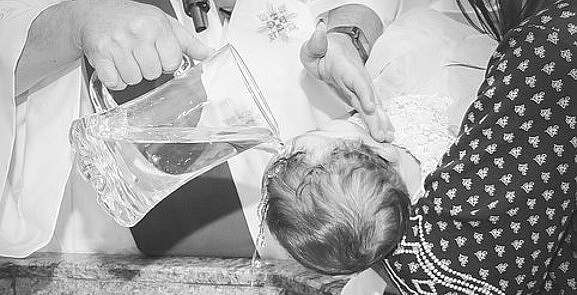
In Bollezeele (France), the Shrine of Our Lady of the Visitation has a long history, going back to an apparition of the Virgin Mary on the bank of the Yser River, in the form of a stone statue standing by a spring. The date of the first miracle is unknown, but records indicate that a pilgrimage existed before the 13th century. According to tradition, the never-seen-before statue was transported twice without ceremony to the parish church, but each time it disappeared, to return exactly where it had been found. Seeing this, the people decided to organize a solemn procession to bring the statue to the church, and this time it agreed to stay. The itinerary became known as "the way of the procession."
In 1429, a child died without baptism and had to be buried in secular land. The mother, who was in bed and still recovering from giving birth, received the order to exhume the baby in a dream. Her husband, who had had the same dream, had their son exhumed. This happened in winter. The little corpse was exhumed and carried to the altar of Our Lady of Bollezeele. There, he miraculously moved and came back to life just long enough to be baptized, before leaving this life again. This allowed him to be buried in sacred ground.
In the 16th century, around 1510, when the plague was devastating Flanders, the people turned to Our Lady of Bollezeele in prayer, and obtained an end to the plague.
In the 17th century, Queen Mary Modena, the wife of James II, King of England, having learned that a large number of sterile women were able to conceive after visiting the shrine dedicated to the mystery of the Visitation, asked for prayers in the chapel of Bollezeele because she longed for a son, and on May 20, 1688, she gave birth to the Prince of Wales.
In 1776, the Abbess of Ravensberghe (French Flanders) gave the church a relic of the Holy Cross. Finally, in 1859, the entire population of Bollezeele experienced the protection of the Virgin, as a terrible hail storm ravaged the whole region, sparing only their town.